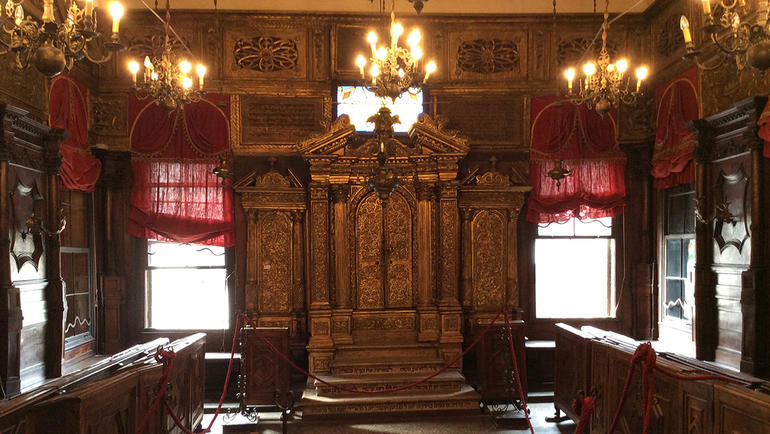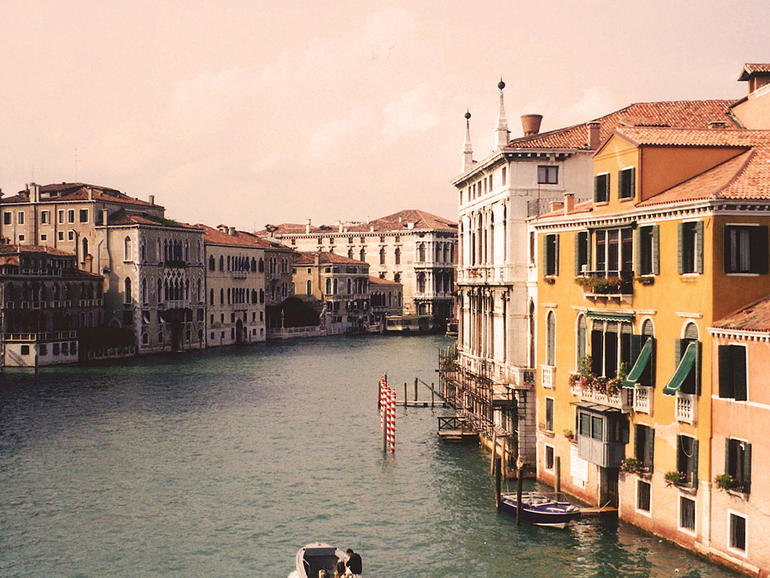
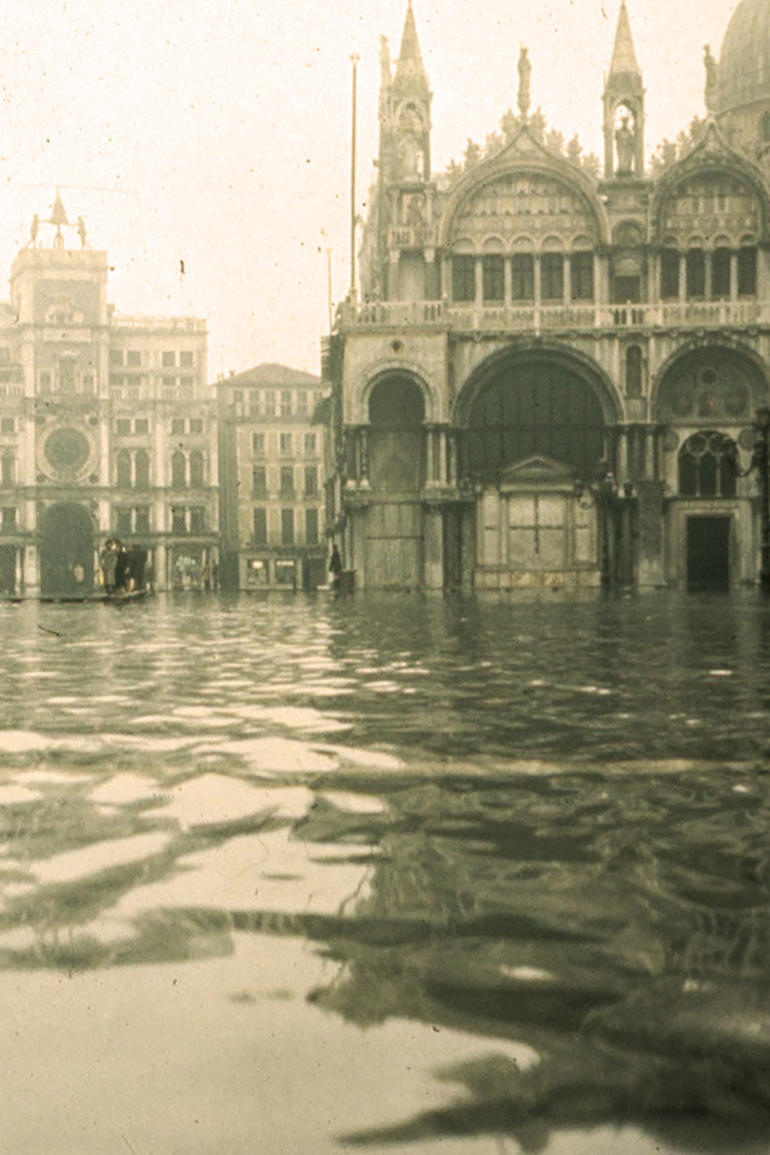
On the night of November 4, 1966, an unprecedented flood unleashed its forces on the city of Venice and caused enormous damage to the entire city and its superb buildings. The response from the public all around the world led to the first truly international campaign to save heritage. World Monuments Fund, then the International Fund for Monuments, was an early respondent, and there is perhaps no other place where we have had a more sustained and intimate experience than in Venice.
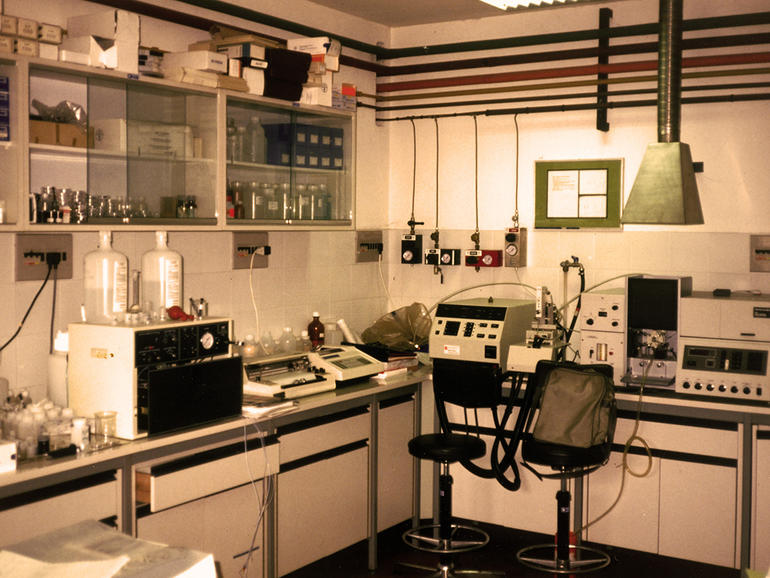
Misericordia Laboratory
WMF’s earliest projects after the floods of 1966 focused not merely on conserving notable works of architecture, but on addressing matters of long term stewardship. In partnership with the Samuel H. Kress Foundation and the Italian government, WMF assisted in the establishment of the Misericordia Laboratory, which assured Venice would become a center for critical research and conservation training. The facility, installed in the thirteenth-century Scuola Vecchia della Misericordia, was equipped with state-of-the-art technology. Today, it remains an important conservation center in Europe and its scientists are called upon regularly to advise projects throughout the world.
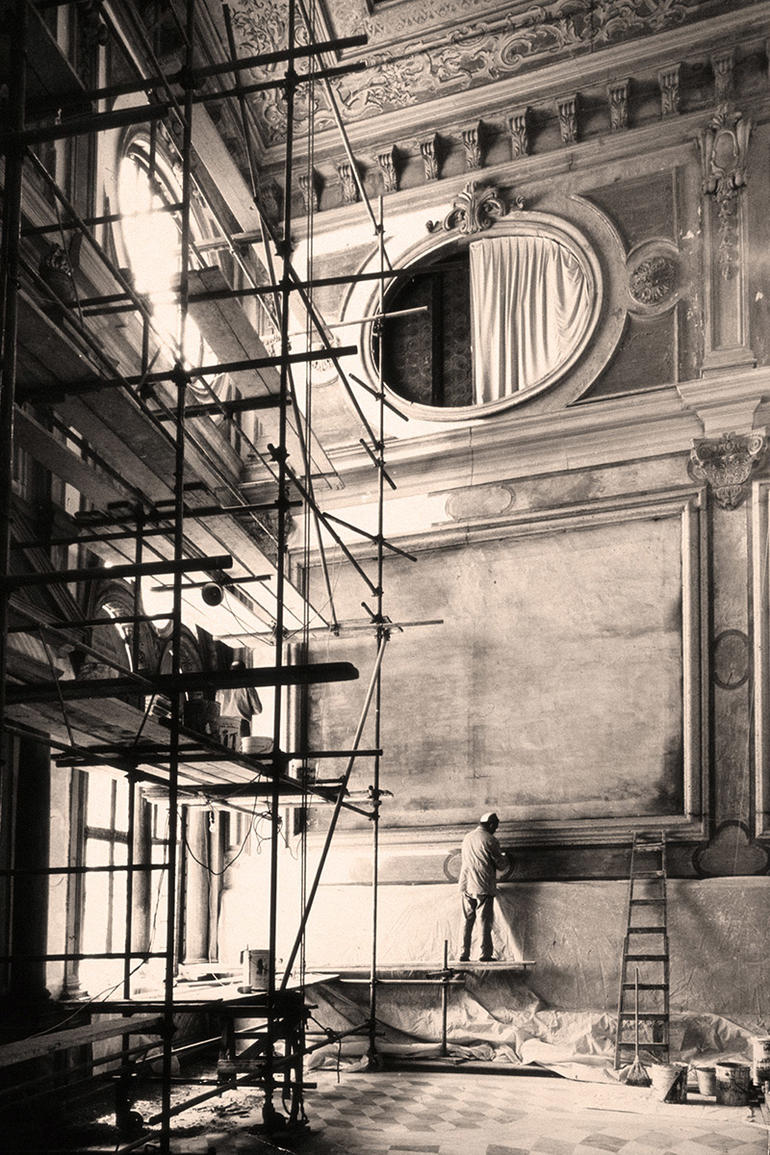
Scuola Grande di San Giovanni Evangelista
Along with establishing the Misericordia Laboratory, during the years following the dramatic floods of 1966 World Monuments Fund also carried out many conservation projects. In 1969, WMF began a ten-year project at the Scuola Grande di San Giovanni Evangelista. The scuola rose to prominence in the thirteenth century when scule—religious confraternities that sponsored acts of charity—were highly influential. During the following centuries the Scuola Grande di San Giovanni Evangelista became one of the most prestigious confraternities in Venice and the building was enriched with a gothic-style façade, a spectacular double staircase designed by architect Mauro Codussi, and a fine series of paintings that embellished the oratorio. WMF’s conservation project focused on structural repairs as well as cleaning and art restoration, including the exquisite eighteenth-century carved marble mosaic floor.
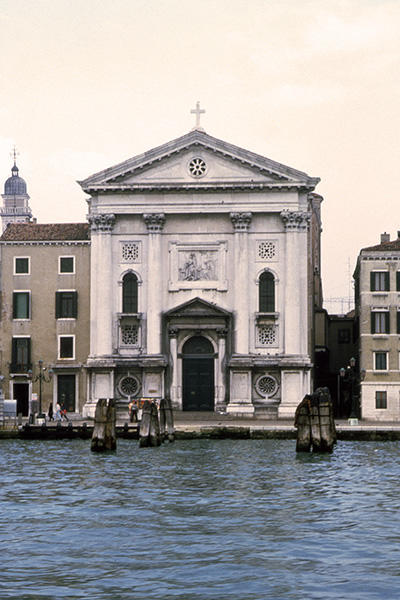
Santa Maria della Visitazione (Church of the Pietà)
World Monuments Fund started working on Santa Maria della Visitazione, also known as the Church of the Pietà, in 1971. The building is perhaps best known for its ties to violinist and composer Antonio Vivaldi, who taught at the accompanying foundling hospital from 1709 until 1741. Construction of the church started in 1744, and Giambattista Tiepolo, the greatest fresco painter of the age, was commissioned to decorate the wall and ceiling above the high altar.
By the mid-twentieth century, humidity had caused serious damage to the interior of the church and threatened Tiepolo's work. WMF’s twenty-year project included retiling the roof, mitigating water infiltration problems, and installing a new lighting system that highlights the building’s interior finishes and decorative elements.
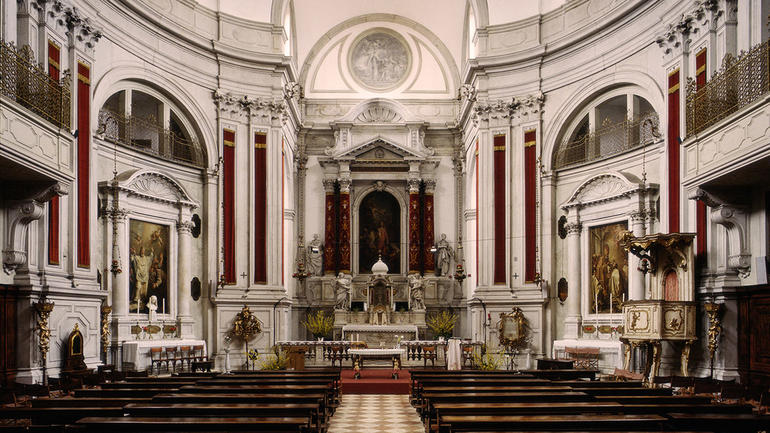
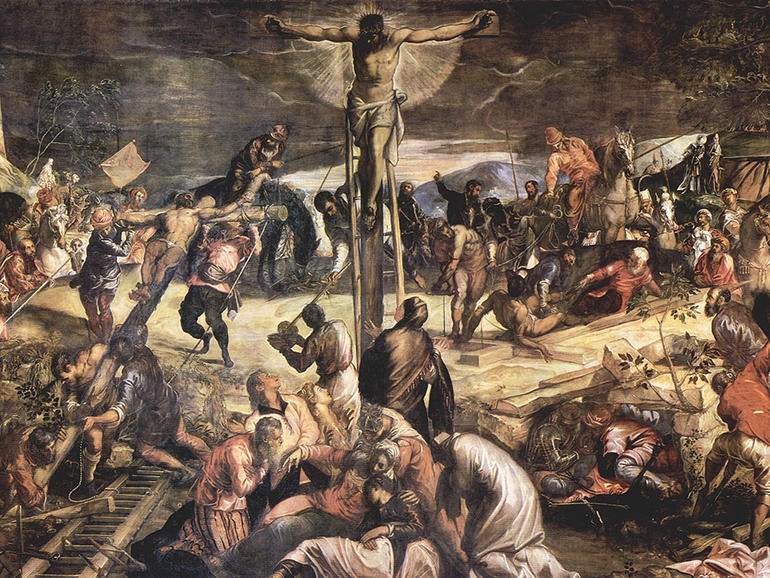
Scuola Grande di San Rocco
Our work in Venice has always been done with utmost care. In 1969 WMF created a painting conservation studio to restore a series of works by Tintoretto located at the Scuola Grande di San Rocco. Founded in 1478 and dedicated to the patron saint of plague victims, this scuola went on to become Venice’s richest and largest. Its main building was designed in 1516 by famed architect Bartolomeo Bon and many of the elaborate carvings and decorations of the façade were made possible by donations from citizens seeking protection from the plague of 1527.
The greatest glory of the building is the renowned cycle by Jacopo Tintoretto that covers the vast ceilings and spacious walls. Over the years, many of the paintings had fallen into disrepair as rainwater dripped through the canvases to be caught by buckets on the floor. Thanks to WMF’s ten-year conservation project, Tintoretto’s masterpieces were brought back to life.
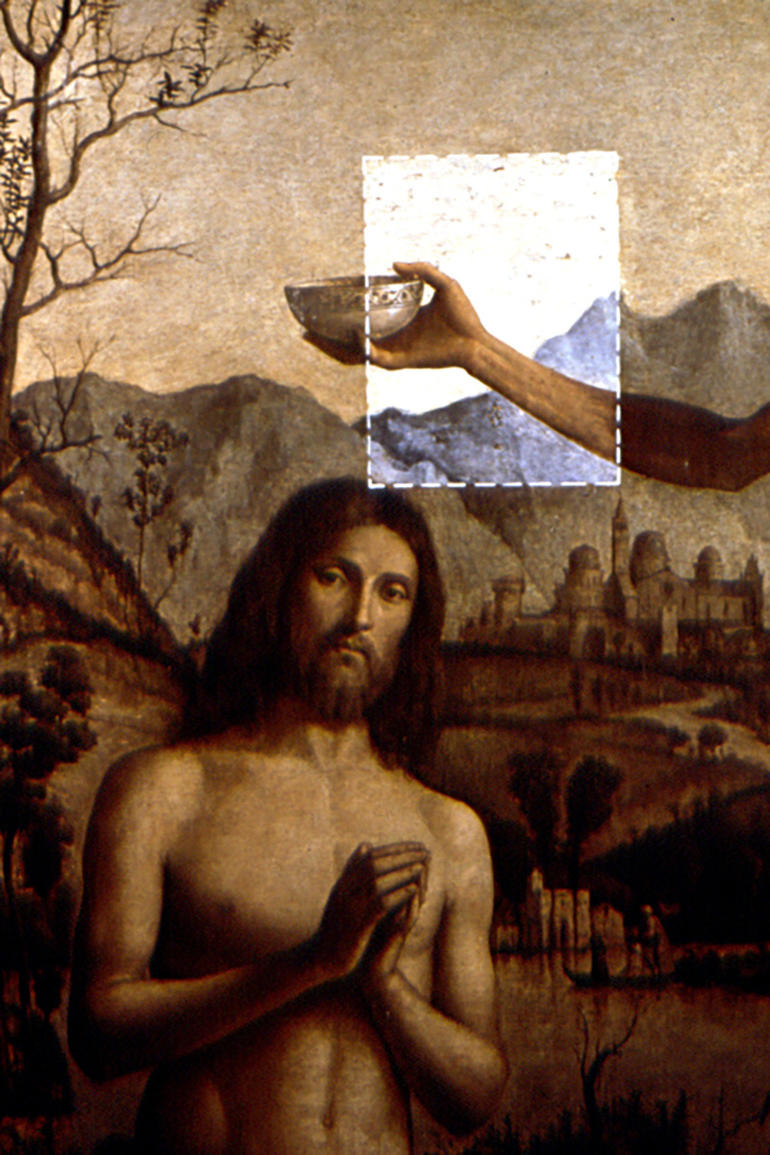
Church of San Giovanni in Bragora
Many of our projects in the city have also entailed the used of very specialized technologies. In the church of San Giovanni in Bragora, WMF utilized specialized technology and X-ray photogrammetry to restore the spectacular “Baptism of Christ” painting by Giambattista Cima da Conegliano.
This work was pivotal not only for the artist but for Venetian Renaissance painting as it is the earliest surviving large-scale representation of the subject. The restoration, carried out in the late 1980s, began with the removal of the overpainting and varnish, revealing the original surface in good condition with spectacular bright blues against a country landscape.
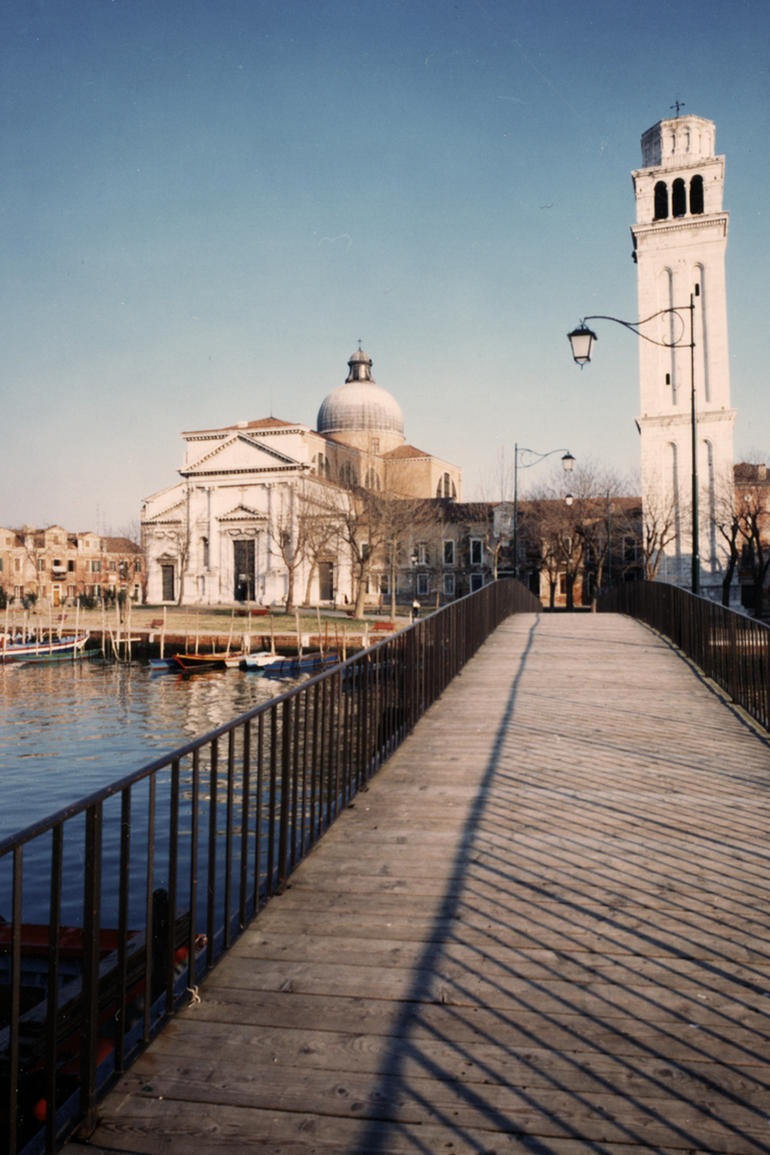
Basilica of San Pietro di Castello
WMF’s projects in Venice have also addressed highly significant sites off the beaten path that were brought back to public attention through the conservation process. Such was the case at the Basilica of San Pietro di Castello, located in a primarily residential island, far to the east of Piazza San Marco. This island was indeed one of the earliest Venetian settlements and the ninth-century church of San Pietro was once the seat of the Bishop of Venice.
WMF’s work on the church began in 1970, and included the restoration of the window casings, floors, walls, stone and wooden furnishings, the fifteenth-century bell tower, and the magnificent eighteenth-century organ. Today, despite the church’s remote location, it has become a premier site for organ concerts, attracting both renowned organists and international audiences.
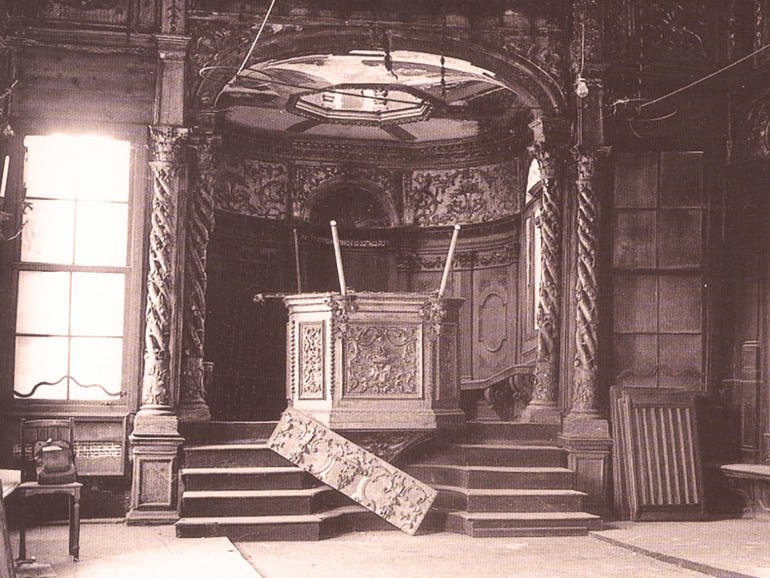
The Venetian Ghetto: Schola Canton
Jewish Heritage Program
WMF’s interest in highly significant but mostly unnoticed sites is also illustrated by our project at Schola Canton. Given the checkered past between the Jewish community and Venetian authorities, when the schola was built in 1531, it was installed on the top floor of a building devoid of architectural distinction in a purposeful attempt at camouflage. In contrast to the exterior, however, the synagogue's interior is richly decorated with wood, marble, stucco, and gilding.
The school was closed and in danger of ruin when WMF began work in 1973. After reinforcing the foundations of the building, work began on the synagogue itself. Structural repairs were made to the women’s balcony and a new electrical system was installed. In 2014, the sanctuary of the schola had suffered from deterioration and required a new conservation campaign. Thanks to the David Berg Foundation, WMF was able to support the cleaning, repair, consolidation, and re-gilding of the carven wooden surfaces, including the bima, aron kodesh, and decorative panels.
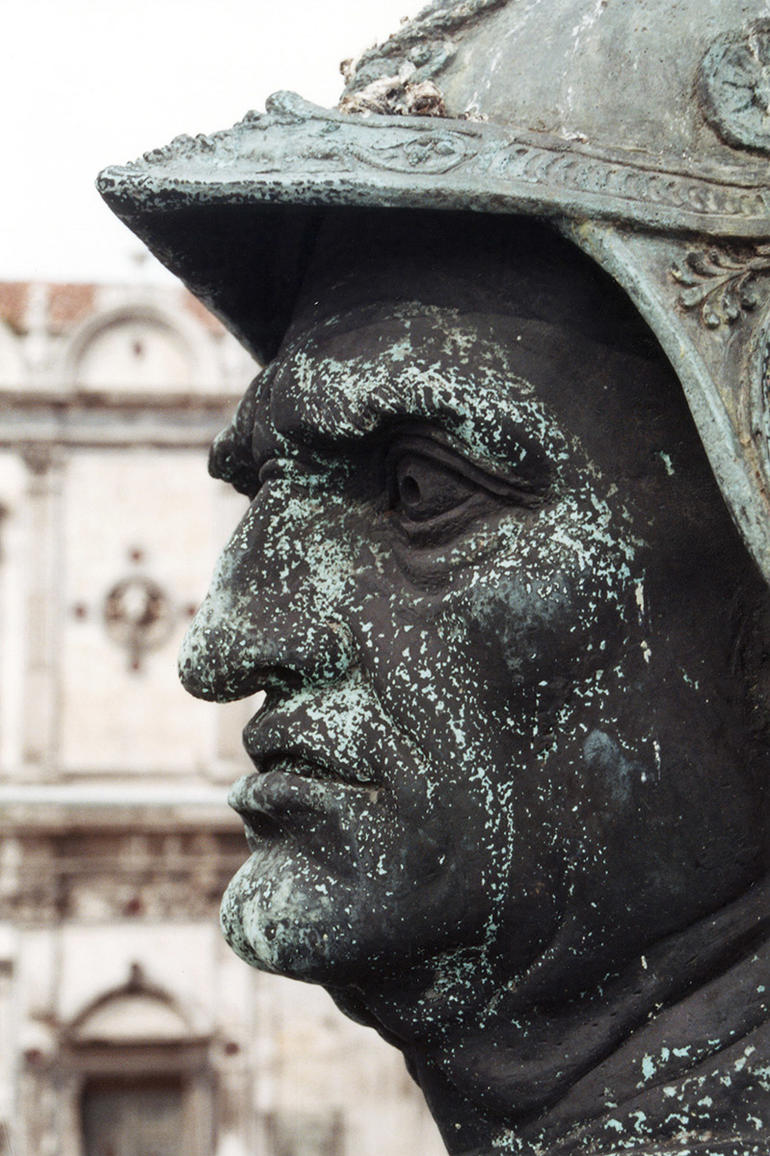
Bartolomeo Colleoni Monument
In addition to the conservation of buildings, WMF’s work in Venice has included efforts to preserve the cityscape. In 1996, the colossal, fifteenth-century Bartolomeo Colleoni monument was included on the inaugural World Monuments Watch to raise awareness about its condition. The statue, the first one to be erected in a public space in Venice, had been completed 500 years before, and suffered from neglect and damage from the local climate.
From 2003 to 2006, World Monuments Fund carried out a major conservation project of the whole monument, constructing a temporary, on-site conservation studio within which to disassemble, analyze, and treat the horse and rider. Conservators treated severely rusted armature, replaced unsalvageable structural members, secured the statue to its stone base, and implanted a monitoring device within the statue to track future changes to the monument’s condition.
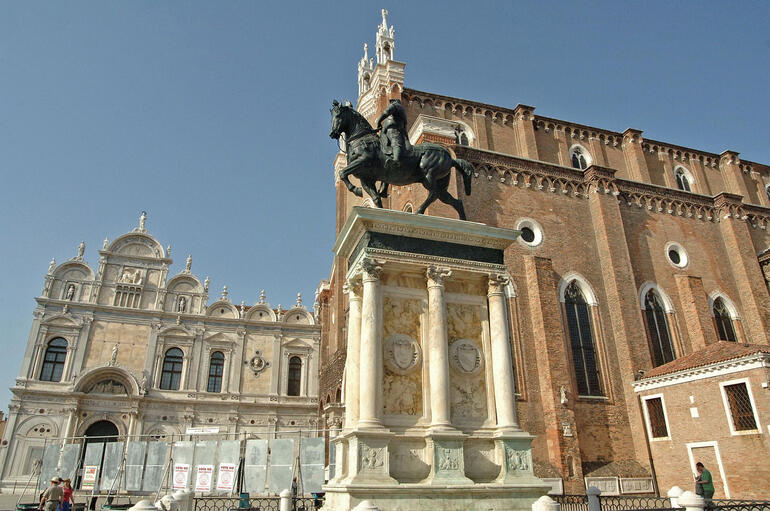
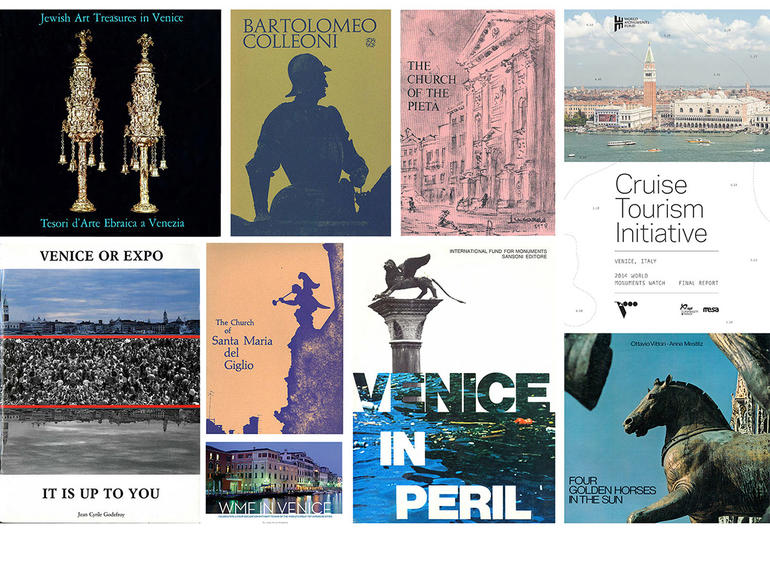
Research & Publications
Along with our on-site projects, World Monuments Fund has supported scholarly and academic research, creating and disseminating knowledge about some of Venice’s most treasured monuments and sites. Several monographs, articles in magazines, brochures, and many other publications have been supported by WMF, including Venice in Peril (1970), Jewish Art Treasures of Venice (1973), Bartolomeo Colleoni (1973), Church of Santa Maria del Giglio (1974), Four Golden Horses in the Sun (1976), Church of the Pietà (1980), Venice or Expo: It is Up to You (1990), The Science of Saving Venice (2005), and the more recent Cruise Tourism Initiative (2014).
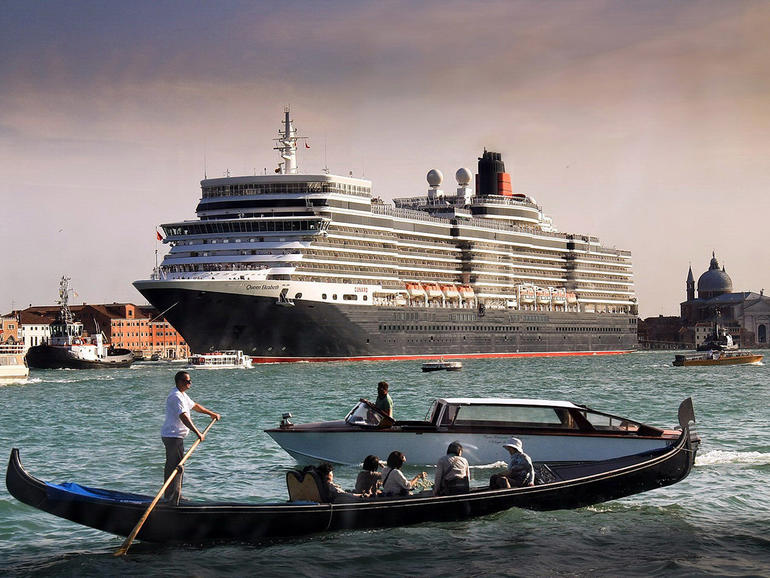
An Ongoing Effort
Fifty years after the 1966 floods, maintaining Venice, not only as a travel destination but as a community, has become increasingly challenging. From 2001 to 2011, the city’s historic center has suffered a 10% decline in population. On the other hand, cruise passenger visitation has increased by 400% from 2008 to 2013, with some 20,000 people debarking per day during the peak tourism season. In order to raise international awareness among about these issues, the entire city of Venice was included on the 2014 World Monuments Watch.
At the same time, we are still working to preserve the city’s built heritage. In 2016, WMF began working in collaboration with local partners to restore the historic windows of three synagogues, the Schola Canton, Schola Tedesca, and Schola Spagnola. Completed in 2017, this restoration project was designed to protect the structures more fully from water damage, advancing the action plan for the full restoration of the synagogues developed by the local Jewish community.
Today, WMF remains committed to raising awareness and public engagement to help allow tourists to continue enjoying Venice's authentic charms in a more sustainable way, which in turn would make the city a more livable place for residents.
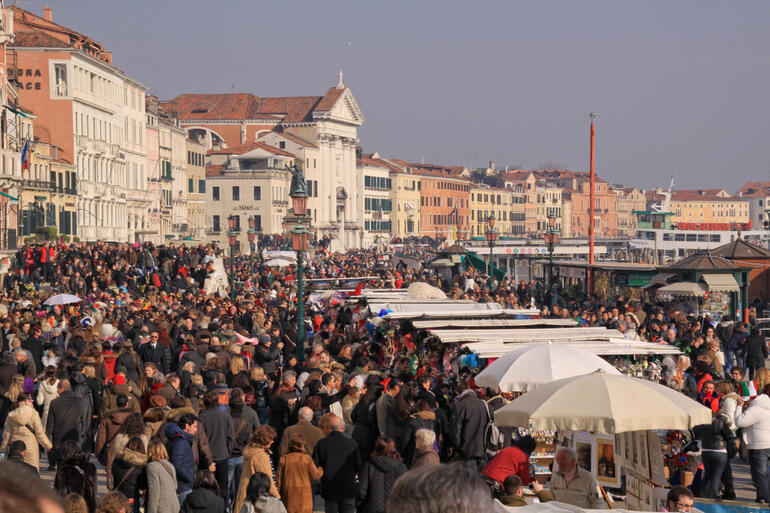
WMF’s long commitment with Venice has been possible thanks to our local partners and generous donors, including the Antiqua Foundation, Assicurazione Generale, the David Berg Foundation, the Samuel H. Kress Foundation, the Gould Foundation, and the Robert W. Wilson Challenge to Conserve Our Heritage.
In Venice, as in any other site WMF has worked, our hope is that, at the conclusion of each project, the public has the opportunity to better understand how a historic site enriches the lives of the local communities and visitors. Your support helps us continue our work in Venice and at other significant historic sites all over the globe.

